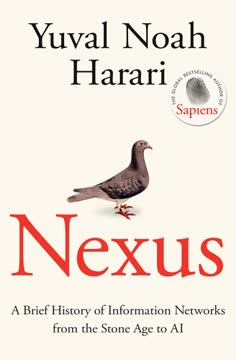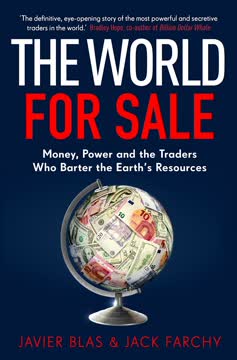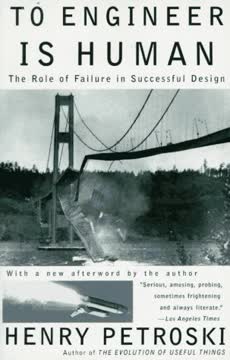Key Takeaways
1. Engineering and Science: Distinct but Intertwined
In fact, the practices of medicine and engineering are more like each other than either is like unqualified science: medical doctors and engineers both welcome all the relevant science they can muster, but neither can wait for complete scientific understanding before acting to save a life or create a new life-saving machine.
Not Just Applied Science. Engineering is often mistakenly viewed as merely applied science, but it's a distinct discipline with its own creative processes and problem-solving approaches. While engineers utilize scientific knowledge, they also rely on intuition, experience, and judgment to create solutions that often go beyond the boundaries of established scientific understanding.
Complementary Roles. Science seeks to understand the natural world, while engineering focuses on creating solutions to practical problems. Both disciplines are essential for progress, and they often work in tandem, with scientific discoveries informing engineering innovations and engineering challenges driving scientific inquiry. The relationship is symbiotic, not hierarchical.
Blurred Lines. The lines between science and engineering can be blurry, as scientists may engage in engineering activities, such as designing experiments or synthesizing new materials, and engineers may conduct scientific research to improve their designs or understand underlying phenomena. This overlap highlights the interconnectedness of the two fields and the importance of collaboration.
2. The Engineer's Role: Creating What Never Was
Theodore von Kármán might be said to have personified the rocket scientist...a scientist studies what is; an engineer creates what never was.
Beyond Understanding. While scientists explore and explain the existing world, engineers are tasked with bringing new things into existence. This involves not just applying scientific principles but also conceiving of novel solutions, designing practical systems, and managing the complexities of implementation.
Creative Problem-Solving. Engineering is a creative endeavor that requires imagination, ingenuity, and a willingness to experiment. Engineers must often work with incomplete information, limited resources, and conflicting constraints to develop solutions that are both effective and feasible.
Practical Application. The engineer's focus is on creating tangible solutions that address real-world needs. This requires a deep understanding of materials, processes, and human factors, as well as the ability to translate abstract concepts into concrete designs. The engineer must consider:
- Cost
- Manufacturability
- Reliability
- Safety
3. Beyond Application: Engineering's Creative Independence
Science never tells an engineer how to put anything together.
Choice and Judgment. Engineering design is not a deterministic process dictated solely by scientific principles. Engineers have a wide range of choices to make regarding materials, configurations, and methods, and these choices are often guided by judgment, experience, and aesthetic considerations.
Preceding Science. Engineering and technology often precede scientific understanding. Many inventions, such as the steam engine and the airplane, were developed and used successfully before a complete scientific theory of their operation was established. This demonstrates that engineering can be a driver of scientific discovery, rather than simply an application of it.
The Art of the Possible. Engineering is about finding workable solutions within the constraints of reality. This often involves making compromises, adapting existing technologies, and pushing the boundaries of what is currently possible. The engineer must be pragmatic and resourceful, finding creative ways to achieve desired outcomes.
4. Risk and Responsibility: The Engineer's Ethical Burden
It is not necessary that we accept an inordinate level of risk as an inevitable by-product of technology.
Mitigating Harm. Engineers have a responsibility to consider the potential risks and unintended consequences of their designs. This includes not only ensuring the safety and reliability of their creations but also assessing their environmental and social impacts.
Ethical Considerations. Engineering decisions often involve ethical dilemmas, such as balancing cost, performance, and safety, or weighing the benefits of a technology against its potential harms. Engineers must be guided by a strong sense of professional ethics and a commitment to the public good.
Systemic Thinking. Engineers must consider the broader context in which their designs will be used, including the potential for misuse, the vulnerability of systems to failure, and the long-term effects on society and the environment. This requires a holistic approach that goes beyond technical expertise.
5. The Limits of Science: Engineering's Practical Imperative
Politics is the art of taking good decisions on insufficient evidence. The same might be said of the art of engineering.
Action Despite Uncertainty. Engineers often face situations where scientific knowledge is incomplete or uncertain. In these cases, they must make decisions based on the best available information, while acknowledging the potential for unforeseen consequences.
Judgment and Experience. Engineering judgment is essential for navigating uncertainty and making informed decisions in the absence of complete scientific understanding. This involves drawing on experience, consulting with experts, and applying sound engineering principles.
Iterative Design. Engineering is an iterative process of design, testing, and refinement. By continuously evaluating and improving their designs, engineers can reduce uncertainty and increase the likelihood of success, even in the face of complex and unpredictable challenges.
6. Innovation's Path: From Idea to Reality, Bumps and All
Unanticipated developments can sometimes render ineffective or uncompetitive the most promising invention or design—no matter how brilliant its inventor or how outstanding its designer.
Unforeseen Obstacles. The path from invention to widespread adoption is rarely smooth. New technologies often face unexpected challenges, such as changing market conditions, regulatory hurdles, or the emergence of competing innovations.
Adaptability and Resilience. Successful engineers must be adaptable and resilient, able to overcome obstacles and adjust their designs in response to new information. This requires a willingness to learn from failures and a commitment to continuous improvement.
Systemic Perspective. Innovations often have unintended consequences that can undermine their initial benefits. Engineers must consider the broader system in which their designs will operate and anticipate potential problems before they arise.
7. Alternative Energies: A Complex Systems Challenge
Sometimes new technology—even that encouraged by law—brings with it new risks, and we are forced to confront the unthought-of consequences of a seemingly good idea.
Beyond Fossil Fuels. The transition to alternative energy sources is essential for addressing climate change and ensuring a sustainable future. However, this transition is not without its challenges, as new technologies can bring their own set of environmental and economic risks.
Holistic Assessment. Evaluating alternative energy sources requires a holistic assessment of their entire life cycle, from resource extraction to waste disposal. This includes considering factors such as:
- Greenhouse gas emissions
- Land use
- Water consumption
- Social impacts
Balancing Priorities. The development of alternative energy sources involves balancing competing priorities, such as cost, efficiency, and environmental impact. Engineers must find creative solutions that minimize trade-offs and maximize overall benefits.
8. The Two Cultures: Bridging the Divide for Progress
In our society (that is, advanced western society) we have lost even the pretence of a common culture.
Communication Barriers. A lack of communication and understanding between different intellectual disciplines can hinder progress and limit our ability to address complex problems. This is especially true between the sciences and the humanities, which often have different values, perspectives, and methods.
Interdisciplinary Collaboration. Effective problem-solving requires collaboration across disciplines. By bringing together diverse perspectives and expertise, we can develop more comprehensive and innovative solutions.
The Engineer as Bridge. Engineers can play a crucial role in bridging the divide between different cultures, by translating scientific knowledge into practical solutions and communicating the implications of technology to a broader audience.
9. Quantifying the Unknown: Risk Assessment in Engineering
Politics is the art of taking good decisions on insufficient evidence. The same might be said of the art of engineering.
Embracing Uncertainty. Engineering decisions often involve dealing with incomplete information and uncertain outcomes. Risk assessment provides a framework for quantifying these uncertainties and making informed decisions in the face of the unknown.
Probabilistic Thinking. Quantitative risk assessment involves assigning probabilities to different events and outcomes, based on available data and expert judgment. This allows engineers to compare different risks and prioritize mitigation efforts.
Balancing Costs and Benefits. Risk management involves weighing the costs of mitigating potential risks against the benefits of reducing those risks. This requires a careful analysis of trade-offs and a willingness to accept some level of risk in pursuit of other goals.
10. Grand Challenges: Engineering's Call to Action
Rather than focusing on predictions or gee-whiz gadgets, the goal was to identify what needs to be done to help people and the planet thrive.
Defining Priorities. The National Academy of Engineering's list of grand challenges provides a roadmap for addressing some of the most pressing problems facing humanity in the 21st century. These challenges span a wide range of areas, from sustainability and health to security and quality of life.
Interdisciplinary Solutions. Meeting these grand challenges will require a collaborative effort involving engineers, scientists, policymakers, and the public. This will involve not only developing new technologies but also addressing social, economic, and ethical considerations.
A Legacy of Progress. By focusing on these grand challenges, engineers can contribute to a legacy of progress that will benefit future generations. This requires a commitment to innovation, sustainability, and a deep sense of responsibility for the well-being of humanity and the planet.
Last updated:
Review Summary
The Essential Engineer receives mixed reviews, with ratings ranging from 1 to 5 stars. Readers appreciate Petroski's exploration of the relationship between science and engineering, highlighting engineers' contributions often overlooked by society. Some find the book informative and thought-provoking, praising its historical examples and insights into the engineering process. However, critics argue the book lacks focus, is repetitive, and fails to effectively convey its main points. Many readers note that while certain chapters are engaging, others feel disjointed or unnecessary, leading to an uneven reading experience.
Similar Books







Download PDF
Download EPUB
.epub digital book format is ideal for reading ebooks on phones, tablets, and e-readers.













